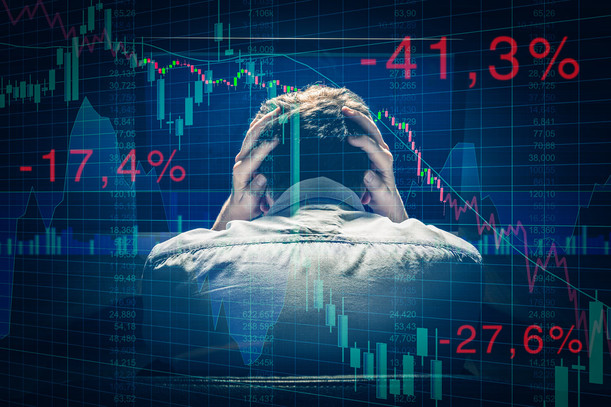A recession is a period of six months, although it may last longer, where the economy of a country is declining, as the industrial and commercial activities decrease, lowering the salaries and reducing the numbers of employees and job offers.
It is a difficult time for the country’s economy, but also considered healthy and necessary to some degree to allow its further growth.
Why should you care about it?
As a trader, it is essential to pay attention to the possible changes in the economy. These changes affect the financial markets directly, and the consequences of economic crisis or recessions can endanger many of the investments that traders may have, resulting in significant losses and even bankruptcy.
A recession can produce a domino effect on the economy. Most of it created because of panic. The devaluing of assets, the sudden closure of medium and small companies because they can't pay their employees, and many other problems cause people to get worried as they watch their pockets getting emptier.
These are the indicators you want to monitor that will give you early hints about a possible recession coming
- Yield Curve:
The yield indicates what the interest rate of a bond is. The yield curve is a line that represents the yields (interest rates) of similar bonds with different maturity, from short-term bonds on the left to long-term bonds on the right. The yield curve normally has an upward slope. The line is rising from left to right – indicating that interest rates are higher on long-term bonds than on short term bonds.
However, when that is not the case, the line inverts and may have a downward slope, known as the inverted yield curve. This situation is abnormal and occurs when long-term bonds offer lower yields than short-term bonds. An inverted yield curve is a warning sign for an economic recession.
- Confidence Index:
Every monetary transaction is closely affected by emotions. People act differently depending on what they feel about it. Before a recession, usually people don’t feel confident about how are things going, so they are undecided about making investments.
- Employment rates:
The percentage of unemployed citizens and the number of job positions offered are significant indicators of how is the economy doing. High unemployment and low job offers can indicate that a recession is coming.
- Recession probability by the Fed:
Fed, or Federal Reserve, keep track of the signs that may lead to a recession, and publish the updates usually at the beginning of the month. When the index reaches at least 30% on a possible recession, it can be taken as a warning.
- LEI (Leading Economic Index):
This indicator, published by the Conference Board, compiles ten datasets that intent to predict the course of the economy worldwide. It is recommended to read it year-to-year to have a correct lecture of this index and notice if the growth has been positive or negative.
- GDP (Gross Domestic Product):
The GDP represents the growth and expansion of the economy in a country. If GDP growth lowers below 2%, it could be leading to a possible recession later down the road. Similarly, sharp fluctuations in GDP numbers can also indicate problems ahead. For example, if GDP drops suddenly, but goes up again, there is a chance that it will then decline again in a consecutive way.
- Company Stocks (stock market):
The stock markets are damned to suffer when a recession occurs, so keeping an eye on the movement of the assets is a great way to detect early the signs of a future recession.
- House pricing:
Lastly, an indicator of a possible recession can be the reduction of the sales of properties. When house prices decline, it is better to start making preparations for a rainy day.
How are we doing?
If you have followed these indicators, you may notice that it is probably that in 2020, the U.S. economy will suffer a recession. Nevertheless, you must not panic. A probability is not a certainty, and the economy could go back to its healthy balance before the year ends.





